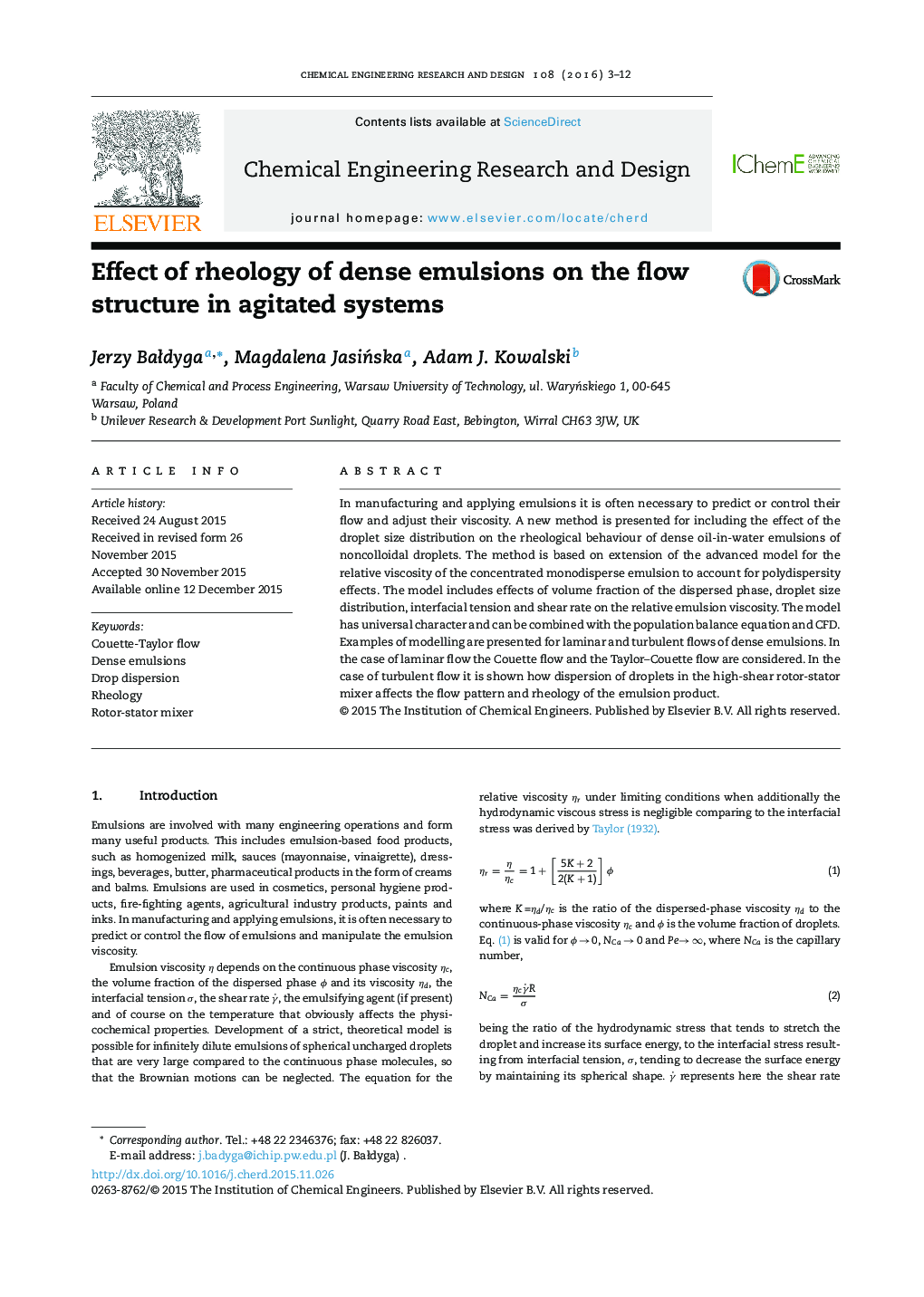| Article ID | Journal | Published Year | Pages | File Type |
|---|---|---|---|---|
| 621118 | Chemical Engineering Research and Design | 2016 | 10 Pages |
•We describe effects of droplet size distribution on viscosity of dense emulsions.•Dense emulsions of polydisperse noncolloidal droplets are considered.•Rheological model is combined with the population balance for drops and CFD.•The multifractal model of turbulence is used to describe drop breakage.•The model can be used to describe complex flows in laminar and turbulent regime.
In manufacturing and applying emulsions it is often necessary to predict or control their flow and adjust their viscosity. A new method is presented for including the effect of the droplet size distribution on the rheological behaviour of dense oil-in-water emulsions of noncolloidal droplets. The method is based on extension of the advanced model for the relative viscosity of the concentrated monodisperse emulsion to account for polydispersity effects. The model includes effects of volume fraction of the dispersed phase, droplet size distribution, interfacial tension and shear rate on the relative emulsion viscosity. The model has universal character and can be combined with the population balance equation and CFD. Examples of modelling are presented for laminar and turbulent flows of dense emulsions. In the case of laminar flow the Couette flow and the Taylor–Couette flow are considered. In the case of turbulent flow it is shown how dispersion of droplets in the high-shear rotor-stator mixer affects the flow pattern and rheology of the emulsion product.
